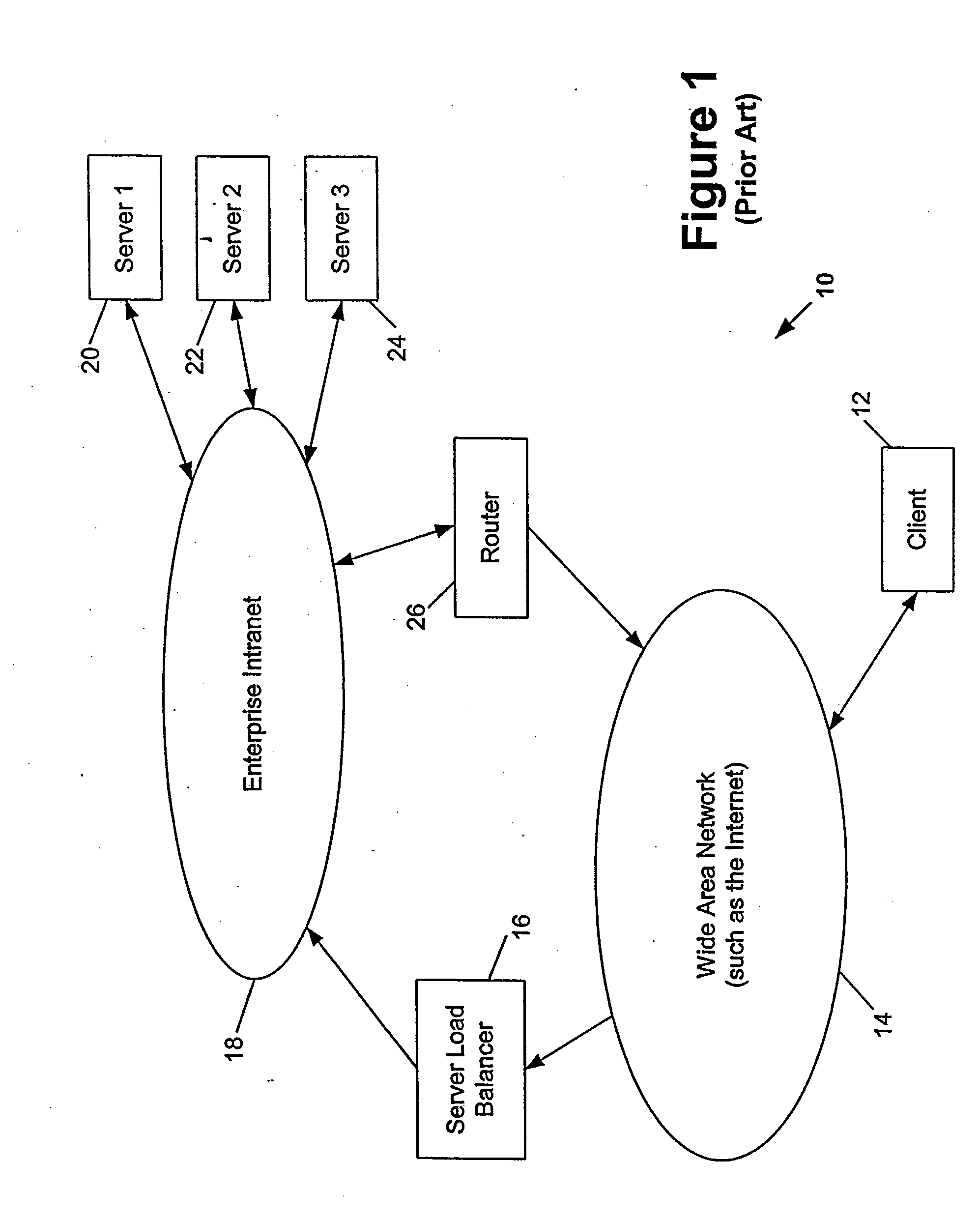Preallocation of Client Network Address Translation Addresses for Client-Server Networks
a client-server network and address translation technology, applied in the field of computer networking devices, can solve the problems of reducing communication performance, unable to obtain enough ip addresses for each of the hosts, and nearly impossible to obtain a class b address, so as to achieve the effect of greatly enhancing the performance of the client-server network, reducing the disadvantages and problems and reducing the disadvantages of prior art client nat systems
- Summary
- Abstract
- Description
- Claims
- Application Information
AI Technical Summary
Benefits of technology
Problems solved by technology
Method used
Image
Examples
Embodiment Construction
1. Definitions
[0022] The following are terms that are used in the instant specification. Their definitions are provided to assist in the understanding of the embodiments that are described herein.
[0023] A “packet” is a collection of data and control information including source and destination node addresses and source and destination ports.
[0024] A “router” is a piece of hardware or software which operates at the network layer to direct packets between various nodes of one or more networks. The network layer generally allows pairs of entities in a network to communicate with each other by finding a path through a series of connected nodes.
[0025] A “client” is a PC or other arbitrary network entity residing on a network and capable of communicating with entities outside of its own network through a router or bridge.
[0026] A “server” is a node to which client requests are sent to execute a service.
[0027] A “server load balancer” is network device that receives connection reque...
PUM
 Login to View More
Login to View More Abstract
Description
Claims
Application Information
 Login to View More
Login to View More - R&D
- Intellectual Property
- Life Sciences
- Materials
- Tech Scout
- Unparalleled Data Quality
- Higher Quality Content
- 60% Fewer Hallucinations
Browse by: Latest US Patents, China's latest patents, Technical Efficacy Thesaurus, Application Domain, Technology Topic, Popular Technical Reports.
© 2025 PatSnap. All rights reserved.Legal|Privacy policy|Modern Slavery Act Transparency Statement|Sitemap|About US| Contact US: help@patsnap.com



